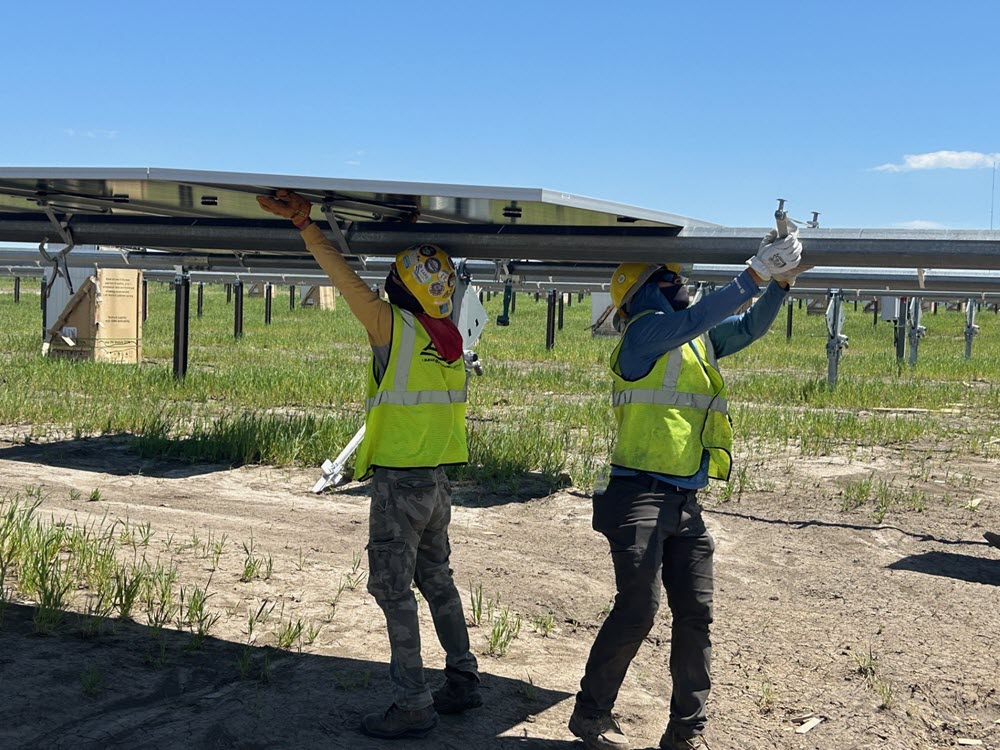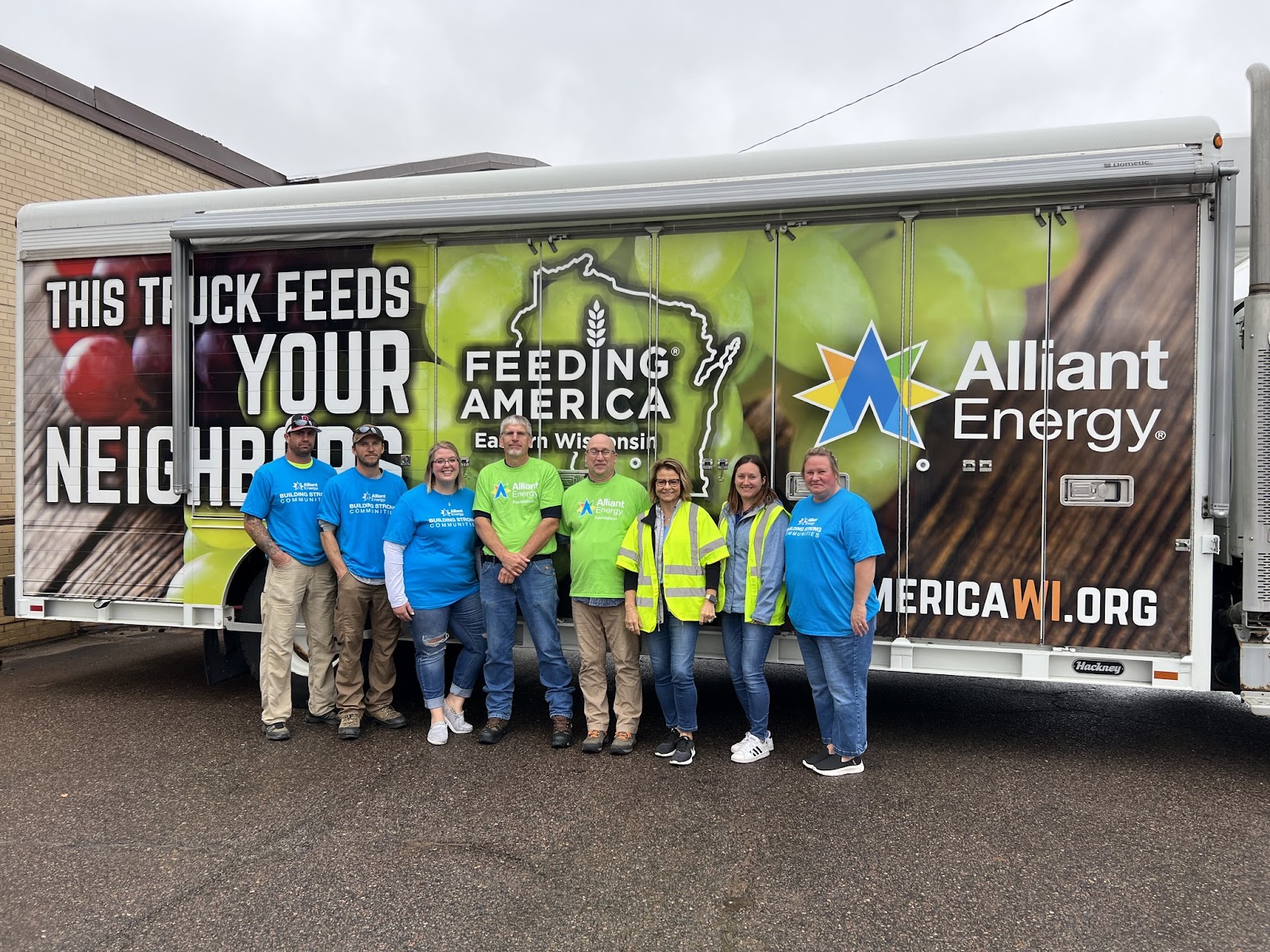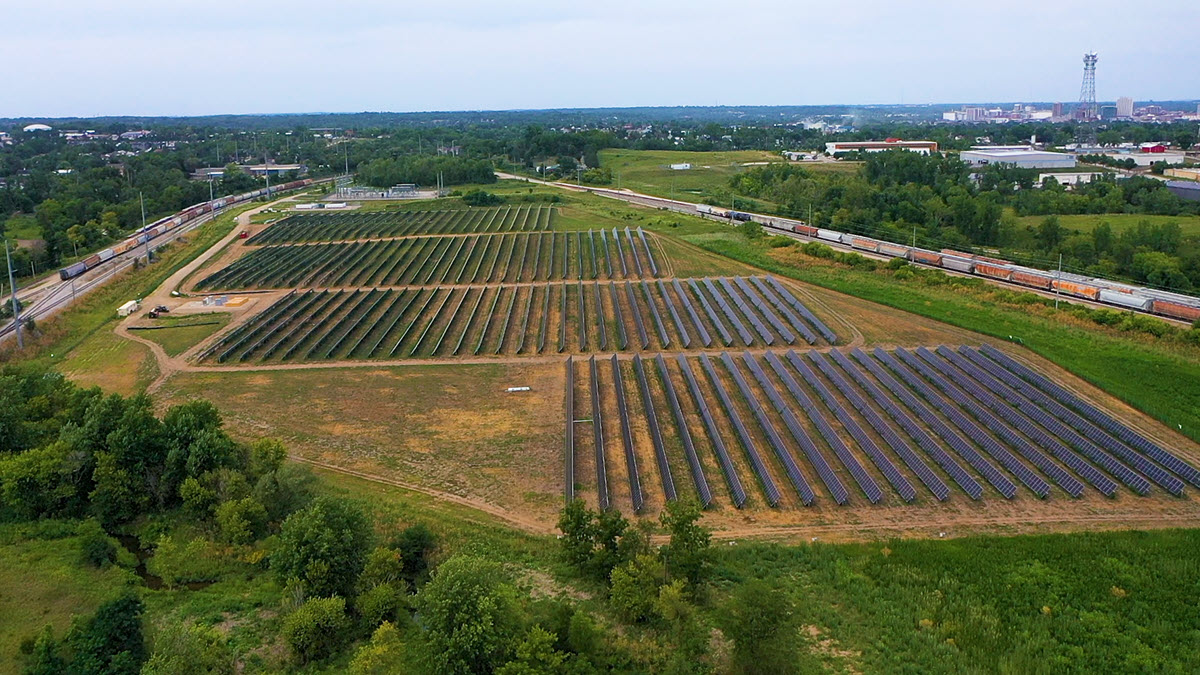In mid-December, Kansas City, Missouri-headquartered and 100% employee-owned Burns & McDonnell announced that it had finished building two Alliant Energy solar projects in Iowa after they were selected as the engineer-procure-construct contractor last April. Their responsibilities included cost optimization, as well as safety and timeline management. The 150-megawatt (MW) Wever solar project and the 50-MW Creston solar project have more than 200 MW of combined capacity and provide enough renewable energy for 40,000 residences per year. At the time of the April announcement, Burns & McDonnell had already produced nine other projects for Alliant Energy in Wisconsin.
With a 90 MW and 60 MW array covering around 900 acres and totaling around 278,000 solar panels, Burns & McDonnell claims that the Wever solar project “is one of Iowa’s largest solar installations,” benefitting over 30,000 residences per year for the next 30 years. Because it is in a flood plain in between the Mississippi and Skunk rivers, the construction and design teams worked together to install drain tiles that will provide the site with 500 years of flood preparedness. Burns & McDonnell’s Transmission & Distribution Group also upgraded a substation to accommodate 75 MW of additional energy storage at a future point in time. The company also installed three miles of underground cable to provide interconnection between the closest existing electrical substation and the Wever project.
The 300-acre Creston solar project, with its 90,000 solar panels, was not an easy build either. Located near the Platte River and with jagged terrain, Burns & McDonnell had to use erosion control and precise grading tactics to enhance stabilization. The project has the capacity to support a future 25 MW energy storage system and will provide clean power to about 11,000 residences per year for the next three decades.

Photo Courtesy Alliant Energy
It was all worth the effort, though. The projects provided a major boon to the local workforce. Most carpenters, electricians, laborers, and operators employed in the construction phase by the company’s wholly-owned construction subsidiary AZCO were local, and apprenticeships and on-the-job training provided them with valuable skills for life. As Jami Stone, construction project manager at Burns & McDonnell, noted in the press release, “With more than 326,000 hours worked and over 420 craft workers at peak construction, we’ve demonstrated that sustainability is about protecting both people and the planet.”
The projects will also generate affordable energy for Iowans. Morgan Hawk, spokesperson for Alliant Energy, told Tri States Public Radio that “by adding solar we can avoid ongoing expenses and investments that would be required to keep some units of our coal-generation fleet operational. So as we transition to solar and other renewable sources, it provides long-term savings for our customers moving forward.” Landowners who leased their land for the project will also be connected with a stable source of income over the projects’ lifetimes.
Moreover, the twin projects will generate significant revenue for the local community. Alliant expects that more than $3.6 million from the Wever project and more than $1.2 million from the Creston project will be provided in local school district revenue. The Wever project will raise more than $700,000 in county property taxes for Lee County, while the Creston project will raise more than $270,000 for Union County. Over the full lifetime of the Wever project, it will raise more than $5.7 million in total property taxes, while the Creston project will raise about $1.9 million.
Additionally, during construction, the projects gave back to the community by putting together food banks and toy drives, and raised $30,000 for the Boys & Girls Clubs of Central Iowa.

Photo Courtesy Alliant Energy
The projects will benefit the local environment, as well. Burns & McDonnell planted pollinator-friendly flora and native grasses that will mature in four years, ultimately enhancing the quality of the soil and local watersheds, and combat erosion. During construction, the company also employed technologies that made the process more efficient and environmentally friendly. The Institute for Sustainable Infrastructure is in the process of verifying the projects for sustainability and resilience through its Envision framework. All nine of the Alliant Wisconsin projects Burns & McDonnell worked on were recognized with Envision Platinum, the highest possible status.
This development is just another chapter in Alliant’s journey with solar energy, with a goal to reach net zero by 2050. Their focus on Iowa is apparent, with a Clean Energy Blueprint outlining plans to install 400 MW of solar power in the state by the end of last year. In 2024, the company finished work on its first community solar garden, the 4.5 MW Community Solar – Cedar Rapids, generating bill credits for participating electric customers. Notably, Senator Joni Ernst visits such solar sites during her 99 County Tour every year!

Photo Courtesy Alliant Energy





